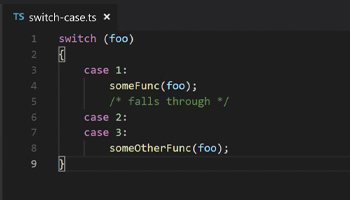Verwendung von Enumeratoren in C#

[vc_row][vc_column][vc_column_text] Die Enumeratoren in C# [/vc_column_text][vc_column_text css=“.vc_custom_1567662472982{border-top-width: 1px !important;border-right-width: 1px !important;border-bottom-width: 1px !important;border-left-width: 1px !important;padding-top: 20px !important;padding-right: 20px !important;padding-bottom: 20px !important;padding-left: 20px !important;border-left-color: #efefef !important;border-left-style: solid !important;border-right-color: #efefef !important;border-right-style: solid !important;border-top-color: #efefef !important;border-top-style: solid !important;border-bottom-color: #efefef !important;border-bottom-style: solid !important;}“]Neulich in der Entwicklungsabteilung der econ-tec GmbH: “Schon mal wer mit ‘nem Enumerator gearbeitet? Ich meine jetzt […]
Switch Case Fallthrough

[vc_row][vc_column][vc_column_text]Ich habe gerade etwas Hilfreiches über TSLint gelernt. Seht euch zunächst folgendes Beispiel an:[/vc_column_text][vc_column_text] switch (foo) { case 1: someFunc(foo); /* falls through */ case 2: case 3: someOtherFunc(foo); } [/vc_column_text][vc_column_text]Zu beachten ist der Kommentar. Euch fällt sicher auf, dass in diesem switch nicht nur mehrere Fälle zusammengefasst sind, sondern dass auch an der Stelle, […]
